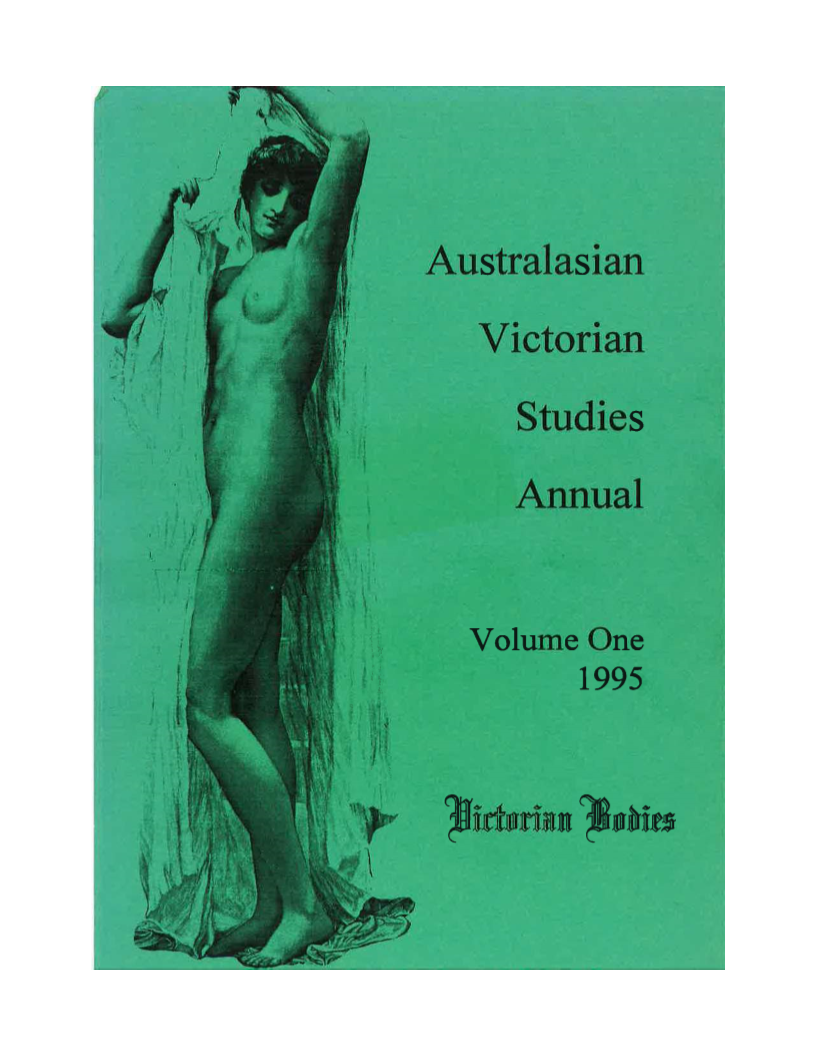"She did not suffer from dysmenorrhoea and used to be unwell five days in all": Menstruation in Australia, 1890-1915
Keywords:
menstruation, Australian history, women's health, reproductive healthAbstract
References
I would like to acknowledge the contributions of the women I have interviewed whose oral histories have influenced and enriched my work.
Baxendale, Kathleen. Interview. 1987. NSW Bicentennial Oral History Collection, NLA. Oral Trc. 2301. Int. 122, 1987.
Blair Bell, W. The Principles of Gynaecology. London: Longmans, 1910.
Black George. Everybody’s Medical Adviser and Consulting Family Physician. Sydney: Dobell, 188?.
Brumberg, Joan Jacobs. "'Something Happens to Girls': Menarche and the Emergence of the Modern American Hygienic Imperative." Journal of the History of Sexuality 4.1 (1993): 99-127.
Buckley, Thomas, and Alma Gottlieb. "A Critical Appraisal of Theories of Menstrual Symbolism." Blood Magic: The Anthropology of Menstruation. Berkeley: U of California P, 1988. 3-50.
Cooke Hirst, Barton. A Text-Book of Diseases of Women. Philadelphia: Saunders, 1904.
Crawford, Patricia. "Attitudes to Menstruation in Seventeenth-Century England." Past and Present 91 (May 1981): 47-73.
Eden, Thomas Watts. A Manual of Gynaecology London: Churchill, 1911.
Finch, Lynette. The Classing Gaze: Sexuality, Class and Surveillance. Sydney: Allen, 1993.
Geddes, Beatrice. Interview. 1987. NSW Bicentennial Oral History Collection, NLA. OralTrc.230l. Int.65, 1987.
Haggar, Jennifer. Australian Colonial Medicine. Adelaide: Rigby, 1979.
Hamilton, J.A.G. "Dysmenorrhoea." Medical Journal of Australia I (1914): 395-98.
Hart, D. Berry, and A.H. Freeland Barbour. Manual of Gynecology. 5th ed Edinburgh: Johnston, 1897.
Horne, George. Practical Gynaecology: A Manual for Students and General Practitioners. Melbourne: Little, 1911.
Jordanova, Ludmilla. Sexual Visions: Images of Gender in Science and Medicine between the Eighteenth and Twentieth Centuries. Hemel Hempstead: Harvester, 1989.
Kelly, Howard A. Medical Gynecology. London: Appleton, 1908.
Laqueur, Thomas. Making Sex: Body and Gender from the Greeks to Freud. Cambridge: Harvard UP, 1990.
Law, Hartland and Herbert E. Law. Viavi Hygiene for Women, Men and Children. Sydney: Australian Viavi Hygiene, 1903.
Lupton, Deborah. Medicine as Culture: Illness, Disease and the Body in Western Societies. London: Sage, 1994.
M.T. Interview. 1987. NSW Bicentennial Oral History Collection, NLA. Oral Trc. 2301. Int. 2301, 1987.
McKillop, L.M. "Unusual Absence of Menstruation." Australasian Medical Gazette (20 July 1912): 58.
Martin, Emily. The Woman in the Body: A Cultural Analysis of Reproduction. Milton Keynes: Open UP, 1987.
Murray, Sally. Interview. 1987. NSW Bicentennial Oral History Collection, NLA. OralTrc.2301. Int34, 1987.
Reiger, Kerreen M. The Disenchantment of the Home: Modernizing the Australian Family, 1880-1940. Melbourne: OUP, 1985.
Roberts, Elizabeth, A Woman's Place: An Oral History of Working-Class Women, 1890-1940. Oxford: Blackwell, 1984.
Shuttleworth, Sally. "Female Circulation: Medical Discourse and Popular Advertising in the Mid-Victorian Era." Body/Politics: Women and the Discourse of Science. Ed. Mary Jacobus, Evelyn Fox Keller and Sally Shuttleworth. New York: Routledge, 1990. 47-68.
Sutton, J. Bland and Arthur E. Giles. The Diseases of Women: A Handbook for Students and Practitioners. London: Rebman, 1897.
Turner, Elaine. Interview by Suellen Murray. 1994. Audiotape in possession of author.


